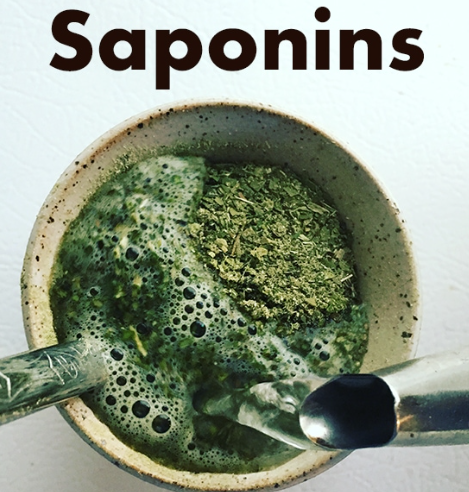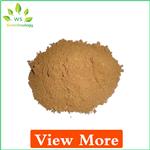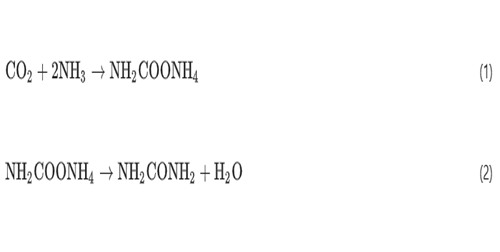Is saponin toxic?
Jul 26,2024
Introduction
Saponins are glycosidic compounds occurring abundantly in the plant kingdom. Some saponins can hemolyze blood cells and form insoluble complexes with cholesterol. Being glycosidic plant products, the saponins are composed of a parent compound and a variable sugar component. Saponins are classified as—Triterpene glycosides, Spirostanol glycosides, and Steroidal alkaloid glycosides[1].
Steroidal glycoalkaloids are sometimes also referred to as saponins. The triterpene and steroid backbones are derived from the mevalonic acid pathway, the common precursor being 2,3-oxidosqualene. The name “saponin” derives from the soap-like properties of these compounds. The highly polar sugar moieties and non-polar triterpene or sterol backbones result in a highly amphipathic compound. Hence, these compounds produce stable foams, a feature often associated with aqueous extracts from saponin-accumulating plants. Indeed, the names of some plants originate from this property, such as soapwort (Saponaria officinalis), which was historically used as a detergent source.
In plants
Saponins are obtained from diverse parts of plants, such as flowers, fruits, seeds, leaves, stems, bark, and roots. In many plants, synthesis and storage of saponins occur in underground organs, e.g., stolen, roots, and rhizomes of Panax ginseng (ginseng), Glycyrrhiza glabra (liquorice), and Polygala tenuifoliahave contain glycyrrhizin, ginsenosides, and sene genin-derived saponins, respectively. Also, the roots of Bupleurum and legumes of Medicago truncatula aggregate higher levels of saponins (5–200 times) than aerial organs. However, saponins may also be found in aerial organs, e.g., oat leaves contain avenacoside, Centella asiatica leaves contain asiaticosides, and tomato seeds contain tomatoside A.

Dioscorea contains 4%–6% of diosgenin, a steroidal sapogenin. Safed musali contains 2%–17% of saponins and 0.18%–0.2% of sapogenin. Licorice contains 6%–14% of glycyrrhizin. The Saponin content of C. quinoa is estimated to be 0.42%–0.45%. Other sources of saponin are Momordica, jalbrahmi, senega, etc.
Toxicity
There is some variation in the toxicity of saponins from different sources. Most toxicity tests have been with single doses administered orally or by intravenous injection. The lethal oral dose is 3–1000 times as great as the lethal intravenous dose. Most saponins are powerful haemolytics in vitro, but large doses are needed to produce haemolysis via intravenous injection[2].
The Ames test, micronucleus test and mouse sperm aberration test were carried out in mice. Results: In the acute toxicity study, the obtained LD50 was more than 10 g per kg per bw for both sexes, the food intake of all rats decreased over some time, and some rats developed diarrhea. In the case of large-dose gavage, the saponin excretion time in rats was approximately four days. When the dosage was 10 mg kg−1, quinoa saponins were hydrolyzed into aglycone within 24 hours and excreted out of the body. The results of the mutagenicity experiment showed that saponins had no mutagenicity in mice[3].
[1] Mugford, Sam T. and A. Osbourn. “Saponin Synthesis and Function.” Isoprenoid Synthesis in Plants and Microorganisms 25 1 (2012): 0.
[2] George, A.J. “Legal status and toxicity of saponins.” Food and cosmetics toxicology 3 (1965): Pages 85-91.
[3] Lin, Bingjie et al. “In vivo acute toxicity and mutagenic analysis of crude saponins from Chenopodium quinoa Willd husks.” RSC Advances 8 (2021): 4829–4841.
References:
[1] MUGFORD S T, OSBOURN A. Saponin Synthesis and Function[J]. Isoprenoid Synthesis in Plants and Microorganisms, 2012, 25 1: 265. DOI:10.1007/978-1-4614-4063-5\_28.
[2] GEORGE A J. Legal status and toxicity of saponins[J]. Food and cosmetics toxicology, 1965, 3: 5-895. DOI:10.1016/S0015-6264(65)80012-8.
[3] LIN B, QI X, FANG L, et al. In vivo acute toxicity and mutagenic analysis of crude saponins from Chenopodium quinoa Willd husks[J]. RSC Advances, 2021, 8: Page 4286 to 4863. DOI:10.1039/D0RA10170B.
- Related articles
- Related Qustion
- Saponin: A Multifunctional Compound with Expanding Applications Nov 25, 2024
Saponins have garnered significant interest in recent years for their unique properties and diverse applications across industries.
- Properties and Biological functions of Saponin Jul 21, 2022
Saponins are secondary metabolites with high molecular weight. They present in a wide range of plant species and are distributed throughout the bark, leaves, stems, roots and even flowers.
- Toxicity and extraction of Saponin May 9, 2022
Saponin also selectively referred to as triterpene glycosides, are bitter-tasting usually toxic plant-derived organic chemicals that have a foamy quality when agitated in water.
1,7-Dimethylxanthine is a naturally occurring alkaloid compound that can enhance alertness and reduce drowsiness.....
Feb 27,2025APIUrea (H2NCONH2) is one of the most important artificial nitrogen fertilisers in the agricultural economy, providing essential nitrogen for plant growth.....
Dec 16,2024Biochemical EngineeringSaponin
8047-15-2You may like
- Saponin
-

- $0.00 / 1kg
- 2025-04-07
- CAS:8047-15-2
- Min. Order: 1kg
- Purity: 99%
- Supply Ability: 20MT
- Tea Saponin
-

- $0.00 / 100G
- 2025-04-03
- CAS:8047-15-2
- Min. Order: 100G
- Purity: 1-98% HPLC
- Supply Ability: 1000kg
- Saponin
-

- $200.00 / 1kg
- 2025-04-02
- CAS:8047-15-2
- Min. Order: 1kg
- Purity: 99%
- Supply Ability: 20ton






